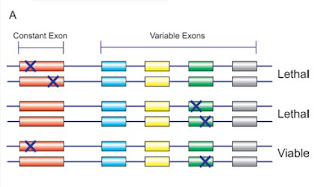Readings: "Steps toward broad-spectrum therapeutics: discovering virulence-associated genes present in diverse human pathogens"
Reading Stubben et al: " Steps toward broad-spectrum therapeutics: discovering virulence-associated genes present in diverse human pathogens" BMC Genomics, Volume 10, Issue 501, 2009 http://www.ncbi.nlm.nih.gov/pubmed/19874620 I found this paper interesting for several reasons: first, it follows a metagenomics approach, second it involves data mining work, and third, it's a step towards making an abstraction from individual pathogenics organisms to a more general understanding of virulence at a biomolecular level. In the abstract, the authors summarize the objective of their work: "New and improved antimicrobial countermeasures are urgently needed to counteract increased resistance to existing antimicrobial treatments and to combat currently untreatable or new emerging infectious diseases. We demonstrate that computational comparative genomics, together with experimental screening, can identify potential generic (i.e., conserved across multiple pathogen spec...
